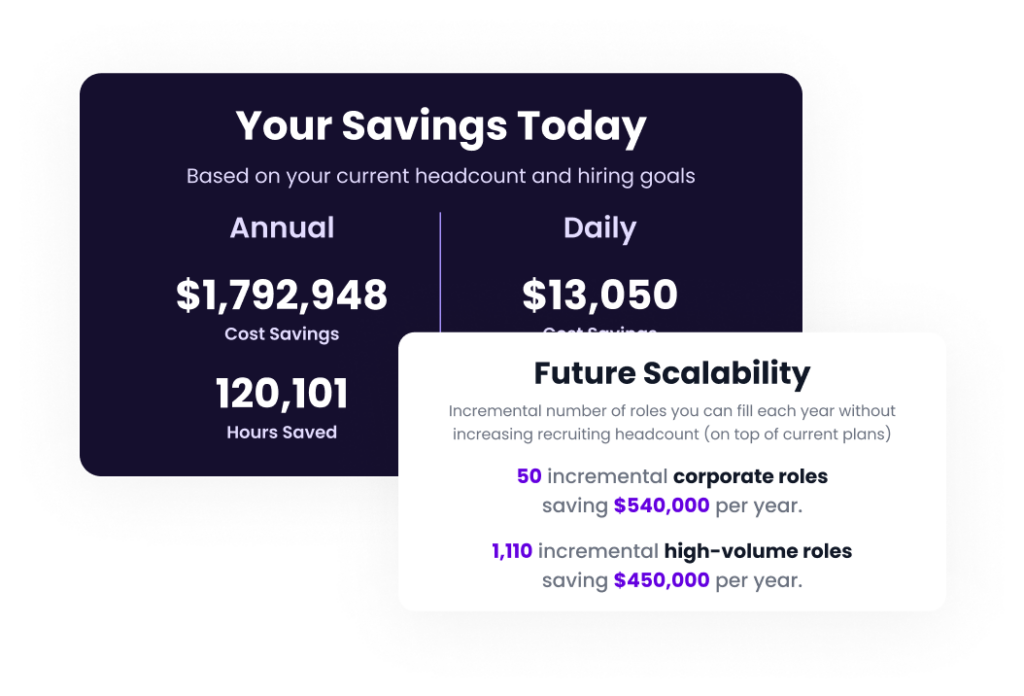All good things must come to an end. After a year of rapid-fire hiring, sky-high startup valuations, and soaring stocks, companies are now coming back down to earth. As the market corrects itself, more and more organizations have responded by enacting hiring slowdowns.
While recruiters are used to adapting to shifting circumstances, hiring slowdowns can feel like uncharted territory. You might be limited from your usual day-to-day activities, but a hiring slowdown doesn’t mean that you need to slow down. Recruiting will rebound, and when it does, you’ll want to be in the most advantageous position possible to snag the best talent.
Here are seven ways to turn hiring slowdowns into golden opportunities to optimize your recruitment process and boost efficiency.
1. Keep Your Talent Pipeline Warm
If hiring is screeching to a halt, the last thing you should do is cut off communication with candidates. Now’s the time to nurture your pipeline and deepen your recruiter-candidate relationships. That way, you’ll hit the ground running when hiring bounces back.
Make it a habit to engage with candidates on a periodic basis. Keep them up to date on any roles that they’re interested in, and practice full transparency on the status of your team’s recruiting.
You can also spend time holding meaningful conversations with candidates that you didn’t have the bandwidth to facilitate before. Delve deep into their career goals, interests, and skills so that you can match them with the perfect opportunity.
2. Improve Your Sourcing Strategies
Take a good, long look at your talent sourcing strategies. You likely have a preferred channel for finding candidates. For most recruiters, this is LinkedIn. However, it’s vital to also tap into alternative, lesser-used channels.
Top candidates receive a flood of messages from recruiters on the most popular channels, making it difficult to stand out from the crowd. 95% of recruiters use LinkedIn to hunt for talent; that’s a lot of competition. Leveraging alternative channels gives you an edge and captures the attention of candidates that you might not have been able to reach before.
Look into industry-specific Facebook and Reddit groups, Slack communities, face-to-face events, and double down on your referral program to diversify your channels—and your candidates.
3. Upskill Your Interviewers
Chew on this stat: 44% of job seekers agree that the interview experience is the most influential part of the hiring process. To set yourself up for success once your hiring slowdown concludes, invest time into improving your interview experience. And the best way to do this? Creating a top-notch interviewer training program.
Start by establishing a process where new interviewers shadow the seasoned interviewers. During the shadowing stage, new interviewers should gain an understanding of which role and skill-specific questions they should ask—and which questions they should avoid (some are actually illegal to ask candidates).
4. …And Upskill Yourself
Always remember to fill your own cup. In the usual day-to-day life of a recruiter, it’s hard to block off time for learning. Thankfully, hiring slowdowns offer extra time to spend on professional development. Seize it!
Now’s the time to dig up those online courses, certifications, or webinars that you’ve bookmarked. Consider building up the following relevant skills and attributes:
- Resilience
- Navigating remote/flexible work (if applicable)
- Relationship building
- Systems thinking
- Personal branding
- Data analysis
- Time management
There’s countless platforms out there that offer classes and certifications, but some of the popular ones for recruiters include LinkedIn Learning, The Recruitment Education Institute, Alison, and Recruiting Toolbox.
5. Action on Candidate Feedback
It’s crucial to collect feedback from candidates to understand what they really think about your hiring process and recruitment methods. However, it can be difficult to find time to take action on the feedback.
Hiring slowdowns offer the opportunity to thoughtfully review this feedback. Assess your interview process for ways to make adjustments based on the input that you received.
If you’ve never even collected feedback, now’s the time to do so. Despite the 68% of candidates that would like to provide feedback after an interview, 75% report rarely or never being asked for their opinions. Make a project out of setting up a candidate feedback collection system, and plan out the perfect questions to ask candidates once hiring returns to business as usual.
6. Strengthen DEIB
It’s incredibly worthwhile to invest in your commitment to DEIB. A hiring process that reflects DEIB principles not only attracts top talent, but also benefits your bottom line. However, according to our 2022 Hiring Insights Report, only 33% of companies plan on prioritizing DEIB in the year ahead.
One of the most difficult aspects of creating a high-quality DEIB hiring policy is finding enough time to thoughtfully strategize. Luckily, a pause in hiring serves as a great opportunity to lay the groundwork for a more equitable hiring process. You can also assess your interview panels to see if there’s opportunities to increase the diversity among your interviewers.
7. Implement the Right Technology
Soon enough, you’ll return to hiring at your normal volume, and your company will once again focus on growth. Now is the time to implement the right recruitment software to remain competitive in the future.
While you might think that hiring more recruiters is the solution to increasing efficiency, that isn’t the case. As wages increase and the Great Resignation moves full steam ahead, human reliant-processes will become far too expensive and downright unscalable.
Tech is the way forward—specifically, GoodTime Hire. Hire automates coordination to reduce time-to-hire, builds genuine connections between recruiters and candidates, and gathers actionable insights to continuously optimize the entire process.
And the results: companies hire up to 70% faster and impress more candidates than ever before.
Ready to learn more about how Hire can transform your talent acquisition process? Come right this way.
Does interview scheduling automation make sense for my team?
ROI is key. This is not a time to invest in software that won’t bring you immediate value. So let’s eliminate the guesswork with our free ROI calculator.





